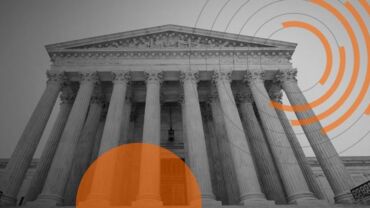The nation's court system was forced to dramatically change the way it conducted business during the pandemic, but could these new practices continue to improve access to justice?
It is said that you should never let a serious crisis to go to waste. And after years of disrupted social interaction brought on by the global pandemic, we seem to be on our way to ending a major crisis. It is important to take from this crisis the lessons and advancements that came with it, including those lessons on efficiency, equity, and justice. Indeed, the legal community as a whole — and especially the nation’s system of courts — should not let this crisis go to waste.
The COVID-19 pandemic and resulting lockdowns and government closures changed the way we were allowed to communicate, limiting personal contact and requiring the use of all alternative means. Ultimately, this advanced our overall ability to communicate and interact remotely. More than 30 states suspended in-person court proceedings for weeks or months after the pandemic hit in March 2020. New Jersey, Connecticut, Delaware, New Mexico, and Alaska mandated their use; and states including New York, California, and Texas urged use of virtual proceedings while suspending conflicting court rules. The pandemic may have forced government’s hand, but many courts and related agencies rose to the challenge in understanding new ways to use technology to ensure that people’s rights were preserved and protected.
A failure to provide adequate protection of citizens’ rights leads to more than a clogged court. There are civil implications, such as allegations of civil rights violations and expensive court cases. For example, a lawsuit, brought by San Francisco’s public defender against the San Francisco Superior Court on behalf of nearly 400 remanded prisoners goes into details about how defendants’ constitutional rights to a speedy trial could be being violated by delays and backlogs due to an overburdened and technically-stagnant court system.
As pandemic restrictions are lifted, courts must balance the benefits of traditional means of adjudication against valuable opportunities to use more advanced means. Governments must evaluate the merits and protection of rights afforded in both the use of traditional communication and virtual appearances. The goal of the court is to preserve rights, and it has become obvious that a hybrid model (using virtual and in-person options) is the best way to make sure individuals have the most opportunities and options to exercise their rights.
Participation & access are key
One of the major hurdles to access to justice, of course, is participation in the process, which can include transportation issues, childcare, time off of work, and many other issues that some people can afford to take for granted. The use of the courts’ time to issue bench warrants, dismiss for want of prosecution, and entering default judgements only to have to appeal and re-address the same issues, is an inefficient use of the limited funds allocated to the judicial system. Texas Chief Justice Nathan L. Hecht clearly explained this as the “new normal”, saying: “We really are determined to take what we learned in the pandemic and build on it.”
In Arizona, judges and other state court officials reported increases in case participation rates in 2020, which they attributed to the move toward remote proceedings. For example, there was an 8% drop year-over-year in June 2020 in the rate of default, or automatic judgments indicating an increase in participation. In Arizona’s largest county, Maricopa, the failure-to-appear rate for eviction cases decreased from nearly 40% in 2019 to approximately 13% in February 2021.
It is a critical net step for the courts and access-to-justice advocates to evaluate each change that was made in an effort to get through the period of crisis and determine which changes are critical to maintaining a properly functioning court system. While this answer will inevitable be complex, it will ultimately make the justice system better and save time and money. In many states this process has already begun.
In June 2020, the state of New York created the Commission to Reimagine the Future of New York’s Courts, a group of judges, lawyers, academics, and technology experts that is studying how courts operated during the pandemic. In April 2021, the group issued technology recommendations to “improve the efficiency and quality of justice services during the ongoing health crisis and beyond.”
As the nation enters a period of post-pandemic recovery, all government agencies have an obligation to grab hold of the lessons and technological advancements that were brought on by the pandemic and subsequent crisis. Using these lessons to create a more just court system is one way to not waste that crisis and struggle it caused.







